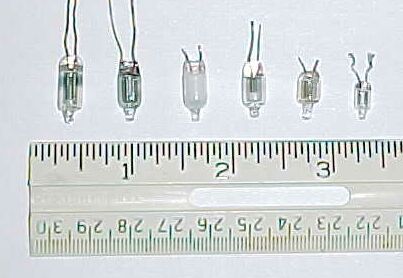
The picture above shows some neon bulbs. The 3rd from the left contains a phosphor coating, that glows green when the lamp is active.


A neon lamp is a glass tube containing neon gas at low pressure and two electrodes. When a voltage is applied to the two electrodes, the gas ionizes, and produces a orangish glow. A typical neon bulb will ionize at about 65 volts. They are often used for indicator lamps, and sometimes voltage regulators. Because the voltage drop across the lamp is almost always constant when ionized, they can be used for voltage regulators.
The other type of neon lamp is similar to the one above, but are longer glass tubes with electrodes at each end. Because this tube is longer than the above, it takes a higher voltage to run these (5-15KV typical). The tube may be filled with low pressure neon, argon or krypton gas, and some have a phosphor coating inside glass. These are usually used for making signs.

The picture above shows some neon bulbs. The 3rd from the left contains a phosphor coating, that glows green when the lamp is active.